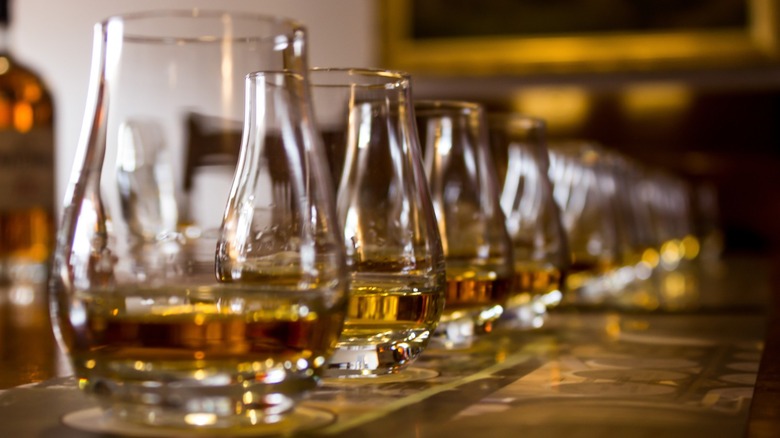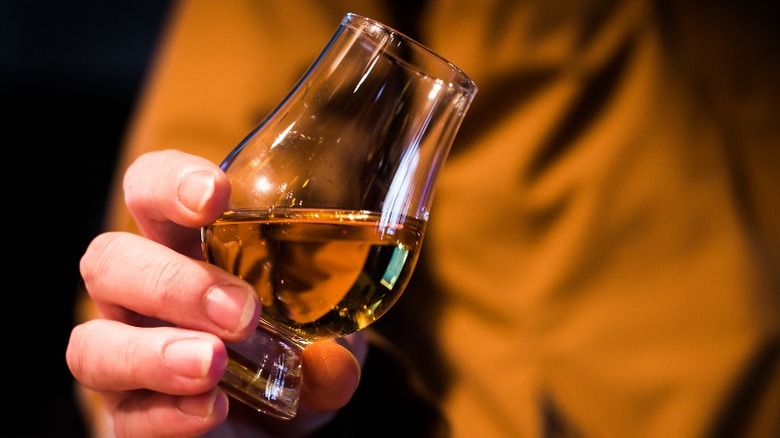The Expert-Approved Way To Taste Whiskey For Maximum Flavor
Real whiskey fans know that there's a difference between drinking whiskey and tasting it. But how do the rest of us go about distinguishing these nuances? Tasting Table reached out to food journalist and advanced cicerone (or beer-tasting expert) Mandy Naglich for some pointers. Naglich's journey to developing her own refined tasting palate has led her to discover tricks and tips that can completely transform your tasting experience, too. First, she emphasizes the importance slowing down. Give each whiskey you taste an adequate amount of time so you can really understand the various flavors coming through.
When you're tasting multiple whiskeys at a time, she also recommends leaving a little in each glass after you sip so you have the opportunity to come back and compare the differences in taste, smell, color, and more. "Our noses are natural difference detectors, so after sipping and sniffing a few samples typical whiskey aromas like vanilla start to fall away," Naglich says. "That's when you'll notice the unique characteristics of each sample and their differences will pop right out of the glasses." She shares additional advice in her new book, "How to Taste: A Guide to Discovering and Savoring Life," which is available for purchase now.
By shifting your focus away from what whiskey will get you the most buzzed and instead savoring taste, examining quality, and identifying more subtle flavor notes, you'll make drinking whiskey into a more refined and pleasant experience. This will surely come in handy, as knowing how to properly taste whiskey allows you to confidently pick a favorite and more effectively pair it with whiskey-based cocktails.
Additional tips for whiskey tasting
Whether you're sampling whiskey at home or as part of a more formal tasting, there are certain steps you can take to ensure that you get the most out of your experience. The key elements that Mandy Naglich looks for when tasting whiskey are mouthfeel, aroma, and flavor. Knowing how to single out each factor and identify different traits among them will elevate your whiskey knowledge. Also, when tasting whiskey it's recommended to use Glencairn glasses (pictured), which have a bulbous, rounded bottom and a more tapered top. This shape allows you to gently swirl the whiskey around and get a better concentration of aroma.
When you go to taste, take a slow, small sip to start. This introduces the flavors to your tongue without overfilling your mouth, allowing you to become accustomed to how the whiskey feels in your mouth and enabling you to analyze the flavor profile more thoroughly. After your first sip, give your mouth a small break before you sip again to let your tasting palate have a chance to experience any aftertaste. After you become accustomed to the smells and mouthfeel of the whiskey you can lean into distinguishing the different tasting notes. Savor each sip and try to identify flavors beyond the first note you get. Becoming familiar with a whiskey requires time and concentration. Eventually, you'll be able to distinguish what makes each type of whiskey different.

